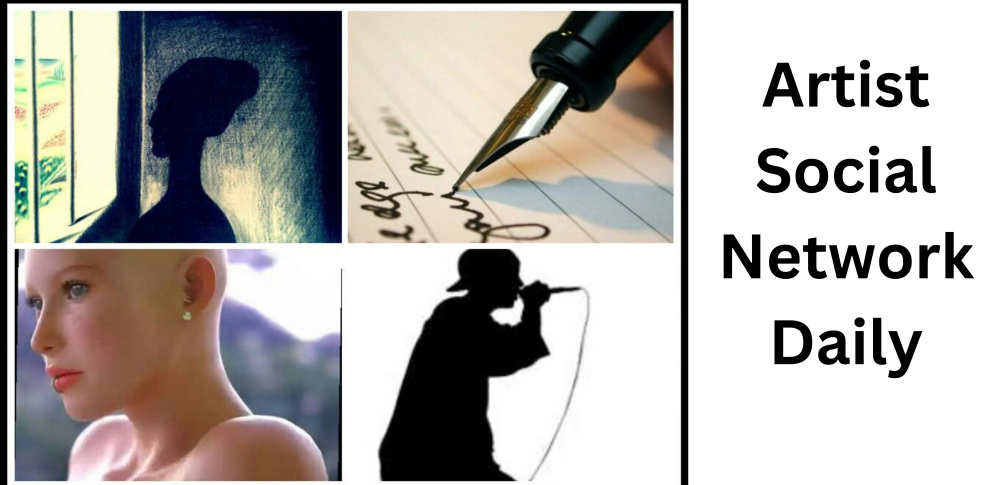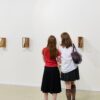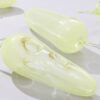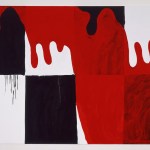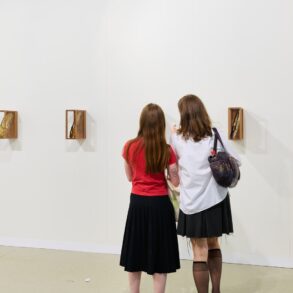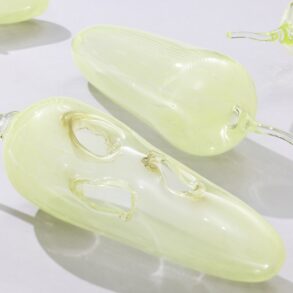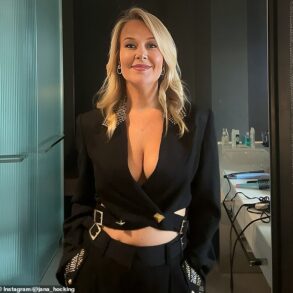A new report is raising alarms about entrenched gender inequities in U.S. art institutions—gaps that a generation of established women artists have increasing tried to correct as they have sought out more autonomy from traditional institutions.
The report was published and funded by Anonymous Was A Woman, a grant organization that awards an independent art award distributed by the New York Foundation for the Arts and Rockefeller Philanthropy Advisors. It is part of an effort to counterbalance underrepresentation for women-identifying artists and weigh its long-term financial effects.
The newly published report, written by Charlotte Burns, Julia Halperin, and SMU Data Arts, surveyed around 1,200 mid-career women artists and builds on previous research by AWAW. Titled “Artists Speak: The Anonymous Was A Woman Survey,” it paints a clear picture of the barriers that women artists say they face as they navigate a predominantly male-dominated art world.
From financial instability and lagging museum support to concerns over censorship, the survey looks at the myriad ways in which women are pushing back on career setbacks—both in their work and in their efforts to redefine how to make being a living artist sustainable full-time.
AWAW was founded in the 1996 by 84-year-old photographer Susan Unterberg, who established the award using inherited funds built from a prominent family-run oil company in the Midwest. The grant has over the years quietly supported hundreds of mid-career women artists across the United States. Unterberg remained anonymous for decades, revealing her identity only in 2018. She started the award in response to congressional funding cuts to artists during the Clinton administration.
According to the report’s findings, more than half (55 percent) of the respondents said they’re seeking out more autonomy amid career setbacks and selling their work independently of galleries and advisors. According to the latest findings, older artists are leading that shift: 59 percent of respondents over 65 years of age have sold their art directly in the past five years, compared with 53 percent of those who are under 40.
(The report’s 1,200 participants lean towards an older and more homogenous demographic; the group surveyed is collectively 70 percent white and average around 58 years old, according to its disclosures. 85 percent of those surveyed were over 40.)
Financial precarity was a big theme of the report. The survey respondents reported living below the financial levels of most Americans, with the report finding that the median income of those who participated was $75,000, lower in comparison to the equivalent figure for U.S. individuals, which is $80,600.
The report warns that its findings on income disparities may reveal a troubling trend: many full-time artists cannot live off their sales alone and rely on family support, reinforcing stereotypes of the art world as “a bastion of privilege.”
A large share of women surveyed who consider themselves full-time artists finance their lifestyles through outside sources. On overage, the survey’s respondents reported that, on average, $20,000 of their household income came from art sales. Passive income, such as investments or partner funds constitutes 33 percent of that total. (The report did not distinguish annual or accumulated household income.)
White respondents were more likely to benefit from family resources. They reported that funding coming from passive sources was around 37 percent of their annual income— more than twice the figure reported by Black artists surveyed. A third reported taking in an annual household income of less than $50,000, suggesting that a large group of working artists face a lack of financial security, reconfirming a long-reported reality that many artists live at lower income levels.
Looking more closely at the places where the artists who were surveyed live permanently paints a more troubling financial picture, with 23 percent of the respondents living in New York, the world’s largest center for art sales. (Less than ten percent of the report’s participants were based outside of the U.S.)
Beyond financial precarity, less measurable barriers like sex discrimination and speech-related issues appear to be affecting younger people more visibly. Censorship especially continues to be a major concern for many, but according to the survey, weighs more heavily on younger artists and people of color. Half of survey respondents reported they feel restricted in speaking freely due to perceived repercussions to their careers.
Younger artists and artists of color reported experiencing more anxiety about expressing views that could be viewed as controversial. 63 percent of artists under 40 and 68 percent of African American and Black artists said they had significant concerns about their freedom of expression. 51 percent of Asian, 49 percent of African American and Black, and 41 percent of Hispanic and Latinx artists reported feeling pressure to create art based on their identity, compared to 22 percent of white artists.
30 percent of artists under 40 reported experiencing sex-based discrimination or harassment, though the report does not distinguish to what extent the incidents reported occurred within professional settings. Women in minority groups appeared to be subject to higher rates of such cases, wtih 42 percent of Latinx and Hispanic women sayin they’ve faced sex-based discrimination, the highest rate of all groups surveyed.
The AWAW report echoes findings from similar studies on gender representation in the arts around the globe. A 2019 study of 18 major U.S. museums revealed that 87 percent of the artists in collections were male and 85 percent were white, while a UK-based analysis by King’s College London showed that just 32 percent of artists represented by London’s major galleries were women—despite women making up the majority of fine arts graduates. In Australia, the 2022 Countess Report found that female representation in state gallery exhibitions had dropped to 33.6 percent, signaling regression rather than progress.
Have a look at the full report from AWAW below:
This post was originally published on this site be sure to check out more of their content
